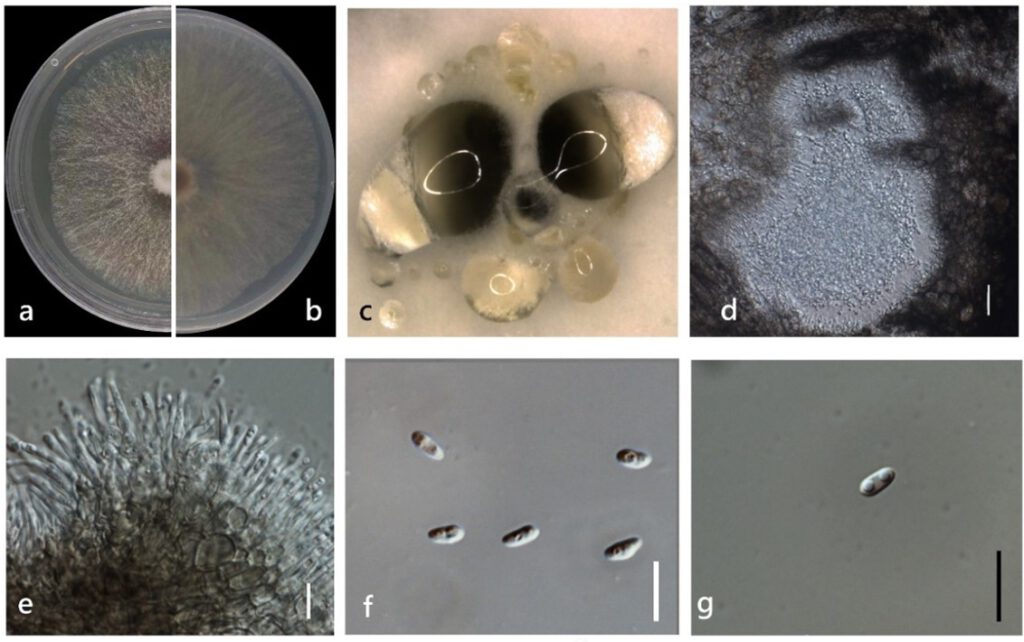Diaporthe morindae M. Luo, W. Guo, M. P. Zhao, Manawas., K. D. Hyde & C. P. You, sp. nov. (Figure 10)
MycoBank number: MB; Index Fungorum number: IF; Facesoffungi number: FoF 11354;
Etymology: In reference to its host of Morinda officinalis.
Holotype: ZHKUCC 22-0072
Endophytic on Morinda officinalis root and stem. Sexual morph: not observed. Asexual morph: Pycnidia 50–380 × 30–160 μm (`x = 170 ± 90 μm× 90 ± 40 μm), oblate, subglobose, flask or irregularly shaped, multiple cavity or rotary cavity. Pycnidial wall consisting of sevearal layers of medium transparent textura globosa-angularis.Conidiogenus cells hyaline, phialidic. Conidiogenous cell hyaline, phialidic. Alpha conidia 6–7 × 2–4 μm (`x = 6 ± 0.3 μm× 3 ± 0.3 μm), hyaline, ellipsoid or torque circular, blunt at ends, mono- or biguttulate. Beta and gamma conidia not observed.
Culture Characteristics: Colonies on PDA reach 85 mm diam. after 5 days. White cotton flocculent aerial hyphae. At 15 days, the central part with a diameter of 10 mm was black on the back of the colony, and the part beyond the diameter of 40 mm began to turn black, then the black deepened, and oil droplets appeared. At 30 days, black dots appeared in the colony, and the fruiting body was gradually produced.
Material examined: China, Guangdong Province, Zhaoqing, isolated from a healthy stem of Morinda officinalis. June 2020, W. Guo, dried culture (ZHKU 22-0043), and living culture (ZHKUCC 22-0072 ex-type and ZHKUCC 22-0073–0076).
Habitat and host: healthy stem and root of Morinda officinalis.
Known distribution: China (Zhaoqing, Guangdong Province).

Figure 10. Diaporthe morindae (ZHKUCC 22-0072) (a) upper view of colonies on PDA; (b) Reverse view of colonies on PDA; (g) Conidiomata sporulating on PDA; (h) longitudinal section of Pycnidium; (i) Conidiogenous cells; (j,k) Alpha conidia. Scale bars: (h) =100 µm; (i–k) =10 µm.
